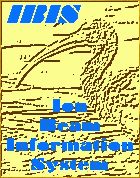
IBIS Document Library
[IBIS Home Page]
[Webmaster]
The simulation modelling used in all IBA software
assumes that the underlying physics, mathematics and
nuclear and atomic data are valid, and adequately describe
the physical processes involved. Starting from a known
sample structure, the corresponding experimental energy
spectrum, be it either particle or electromagnetic, created
from ion beam interactions can be theoretically simulated
from a few basic data, and the known formalism of the
reaction spectrometry. Comparing the experimental and
theoretical spectra, after a few user-conducted iterations
where the assumed composition of the sample is iteratively
modified, a close similarity of the spectra is accomplished.
The sample structure leading to the theoretical spectrum
is then taken to correspond to the material's sample
structure. Erroneous results or misinterpretations of the
material's structure can result from incorrect
science ambiguous data, or
inadequate documentation and guidance
for people to extract the correct information. The analytical
software in wide-spread use today has underlying
physics and computational strategies that in most applications
have been demonstrated to be reliable and robust.
This conclusion arises from the long track record of good
agreement with other results obtained from independent
and complementary techniques. With evolving technologies,
IBA is being called upon to analyse increasingly complex
materials, creating new challenges for IBA software.
Of emerging importance is the necessity for IBA users to
have sufficient confidence and evidence of the ability of
the software codes to produce reliable and correct results,
if used properly.

